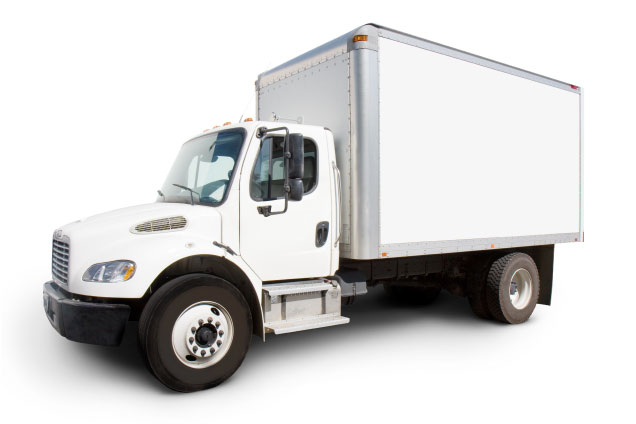Heavy Lifting: Solo Skills and Tips
Posted on 09/06/2025
Heavy Lifting: Solo Skills and Tips
Heavy lifting is a crucial aspect of many professions, athletic pursuits, and daily living activities. Whether you work in a warehouse, train as a competitive powerlifter, or occasionally rearrange your furniture, mastering the skills for solo heavy lifting can protect your body and increase your efficiency. This comprehensive guide explores the best solo heavy lifting techniques, safety protocols, and supplemental tips to make your hard work smarter, safer, and more productive.

Understanding Heavy Lifting: Definition and Fundamentals
Before delving into solo techniques and tips, it is essential to clarify what heavy lifting means. In a general context, it refers to lifting any object or weight that is challenging to move by oneself. This can range from a 50-pound box to a 400-pound barbell, depending on an individual's strength, experience, and physical capabilities.
- Occupational Heavy Lifting: In industries like construction, warehousing, or landscaping, workers commonly handle loads exceeding 50 lbs.
- Recreational and Athletic Heavy Lifting: Activities such as bodybuilding, Olympic lifting, and CrossFit involve maximal or near-maximal loads for few repetitions.
- Everyday Heavy Lifting: Furniture moving, carrying groceries in bulk, or lifting appliances are frequent examples in domestic life.
While the demands may differ, the core principles of safe and effective solo heavy lifting remain the same across all contexts.
Why Master Solo Heavy Lifting Skills?
Learning how to lift heavy items alone is not just about strength. It's about body mechanics, injury prevention, and maximizing productivity with minimal resources. Here's why mastering solo heavy lifting techniques is invaluable:
- Injury Prevention: Incorrect technique can lead to serious injuries, especially of the lower back, shoulders, and knees.
- Efficiency: Proper skills allow for smoother, quicker, and more reliable lifts, even in tight spaces or time-sensitive scenarios.
- Self-Reliance: You won't have to depend on help for every heavy object, empowering independence at work and home.
- Professional Advancement: Safe and efficient lifting is valued in many industries, improving your reputation and job prospects.
Essential Pre-Lift Safety Precautions
Before initiating any solo heavy lift, preparation is key. The following checklist helps reduce risk and optimize your technique:
- Assess the Load: Is it too heavy to lift alone? For most individuals, items over 50 pounds deserve caution. If in doubt, seek assistance or use equipment like dollies or levers.
- Clear the Pathway: Ensure your route is obstacle-free, with no slick spots or tripping hazards.
- Wear Appropriate Gear: Sturdy, closed-toe shoes, non-slip gloves, and comfortable clothing are vital for safety and grip.
- Warm Up: Brief dynamic stretching prepares the body for exertion. Focus on the lower back, hamstrings, shoulders, and wrists.
- Plan the Lift: Visualize each step from grasping the object to setting it down. Anticipate balance shifts or challenging maneuvers.
Adhering to these precautions ensures you're not just lifting heavy - you're lifting smart and safely.
Solo Heavy Lifting: Step-by-Step Technique
Mastery of proper lifting form is essential for anyone attempting to handle heavy items solo, regardless of environment. Here's a foundational, step-by-step guideline:
1. Get Close to the Load
- Stand with feet shoulder-width apart, as near to the object as possible.
- This position minimizes torque on your spine.
2. Plant Your Feet and Engage Core
- Ensure solid footing. Keep weight centered.
- Slightly bend the knees and hips - never your back.
- Tighten abdominal muscles to stabilize your spine.
3. Grip Firmly and Securely
- Use the whole hand, not just your fingers, for a full grip.
- If possible, grasp handles or indented surfaces.
4. Lift With the Legs
- Keep your back straight - no slouching or rounding.
- Push up with your legs, letting your thigh and hip muscles do the work.
- Lift steadily, avoiding quick jerks or twists.
5. Keep the Load Close
- Hold the object as close to your body as possible, at waist level, to reduce strain.
6. Move Slowly and Carefully
- Walk deliberately, scanning your environment and maintaining a solid footing.
- Avoid sudden changes in direction or posture.
7. Set Down With Care
- Reverse the steps: bend knees and hips, keep back straight, and gently lower the item.
- Release your grip only once the load is fully grounded.
Following every step when moving heavy objects alone will significantly reduce the risk of injury and fatigue.
Advanced Solo Lifting Tips for Extra-Heavy Loads
When lifting especially large or awkward items alone, advanced skills and innovative heavy lifting tools are vital.
- Slide, Don't Lift: For items like appliances or furniture, try sliding on a cloth or piece of cardboard rather than lifting altogether.
- Use Leverage and Mechanical Advantage: Employ levers, straps, or dollies to multiply your lifting capability while minimizing strain.
- Break Down Loads: If possible, disassemble or redistribute the weight between multiple trips or containers.
- Use Your Body Weight: For tall or oddly shaped items, lean them slightly and push with your body rather than relying solely on raw strength.
- Invest in Back Support Belts: A support belt can provide extra stability and confidence for particularly risky lifts.
- Keep Communication Ready: If working in a setting where help is available nearby, ensure you can call out in case of trouble, even when initially attempting a solo lift.
Top Tools and Equipment for Solo Heavy Lifting
When confronted with especially challenging loads, the right equipment can turn a dangerous or impossible solo job into a safe routine task. Some of the most effective solo heavy lifting equipment includes:
- Dollies and Hand Trucks: Ideal for boxes and appliances; stair-climbing models are available.
- Furniture Sliders: Let you "glide" heavy items across hard floors or carpets with minimal effort.
- Lifting Straps: Harnesses or forearm straps can help distribute weight more evenly across larger muscle groups.
- Lever Bars: Simple crowbars or specialized levers can shift heavy or awkward loads using the laws of physics.
- Back and Knee Support: Braces and wraps can help prevent fatigue or injury from repetitive lifting.
- Ramps and Platforms: These enable smooth transitions up steps or over obstacles without needing to deadlift the item.
- Portable Hoists and Winches: Best for truly massive solo projects or garage/home gym setups.
With these tools, lifting extremely heavy objects without assistance becomes a safer, more manageable task.
Common Solo Heavy Lifting Mistakes and How to Avoid Them
Even experienced lifters occasionally make errors that risk injury or waste energy. Watch out for these typical mistakes:
- Rounding Your Back: This is the most common and dangerous error. Always keep your spine neutral.
- Lifting with Twists: Twisting while holding a heavy load puts immense stress on the spine.
- Underestimating the Load: When in doubt, err on the side of caution and use a tool, or get help.
- Ignoring Fatigue: Muscle fatigue leads to lapses in form and increases the chance of mistakes. Rest as needed.
- Skipping Warm-Ups: Cold, stiff muscles are far more prone to injury. A five-minute warm-up is a must.
Strength Training for Improved Solo Lifting
One of the best ways to make solo heavy lifting easier and safer is by building a strong, balanced body via regular exercise. The following approaches directly enhance your lifting capability:
Compound Movements
- Deadlifts, squats, and power cleans replicate real-world lifting mechanics, engaging major muscle groups and improving core stability.
Core Training
- Planks, farmer's carries, and rotational movements fortify the abdominal, oblique, and lower back muscles.
Grip Strength
- Farmer's walks, towel hangs, and grip trainers enhance finger and hand power essential for holding bulky or awkward objects.
Flexibility and Mobility
- Yoga, dynamic stretching, and foam rolling increase joint range of motion, reducing the risk of strains or sprains.
Balance and Coordination
- Single-leg exercises, stability ball work, and agility drills are invaluable for handling unexpected shifts in heavy items during solo lifts.
Integrating these workouts into your weekly routine enhances self-reliant heavy lifting ability and overall fitness.
After the Lift: Recovery, Rest, and Injury Prevention
What you do after heavy lifting is as important as the technique itself. Practicing post-lift care ensures your body recovers efficiently and reduces long-term injury risks.
- Stretch and Cool Down: Focus on the back, legs, and shoulders after any major lift.
- Ice Sore Areas: Apply cold packs to any spots that feel overworked to prevent inflammation.
- Rehydrate and Refuel: Drink water and consume a snack or meal rich in proteins and carbohydrates to support muscle repair.
- Monitor for Injury: Pay attention to pain or discomfort that persists more than 24 hours and seek professional advice if needed.

When NOT to Lift Heavy Objects Alone
No matter how skilled or strong you are, some situations are best handled with help. Your health and safety always come first. Avoid solo heavy lifting if:
- The weight exceeds your maximum capacity or feels unmanageable during a test lift.
- The route includes stairs, slick surfaces, or complex navigation.
- The object is too large or awkward to grip securely by yourself.
- You are fatigued, injured, or experiencing sharp pain.
- Hazardous materials or expensive, fragile items are involved.
When in doubt, asking for a hand is a sign of wisdom--not weakness.
Conclusion: Smart, Safe, and Strong Solo Heavy Lifting
Solo heavy lifting is a valuable skill in today's world, fueling productivity at home, in the workplace, or in athletic competition. By mastering correct preparation, technique, supplemental strength training, and recovery, you can lift heavy objects alone safely and efficiently. Remember, the best lifters aren't just strong--they're smart, cautious, and well-equipped. With the insights and tips shared in this guide, you're now ready to tackle your next challenging load, one safe lift at a time.
Stay safe, stay strong, and let your solo heavy lifting skills set you apart!





